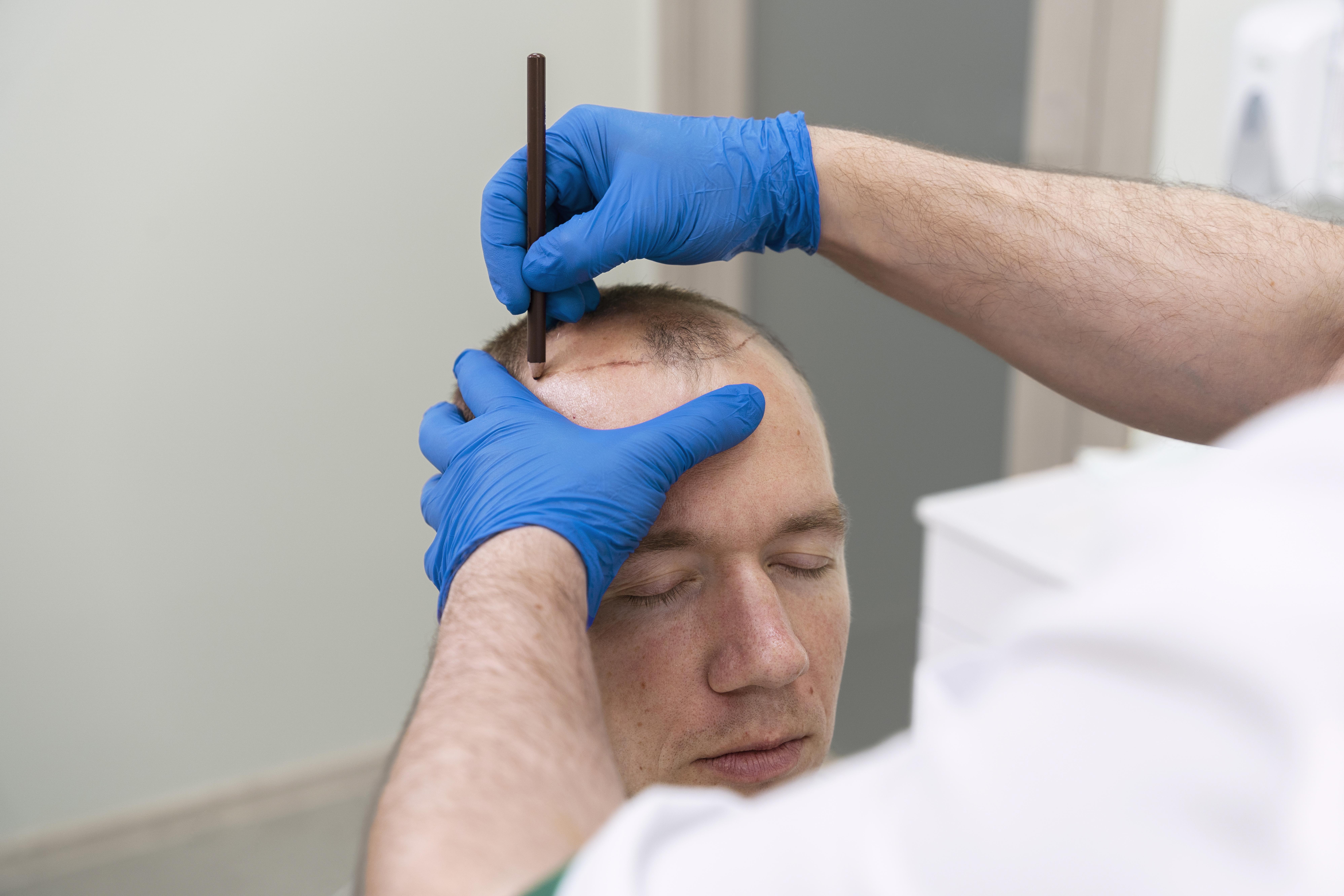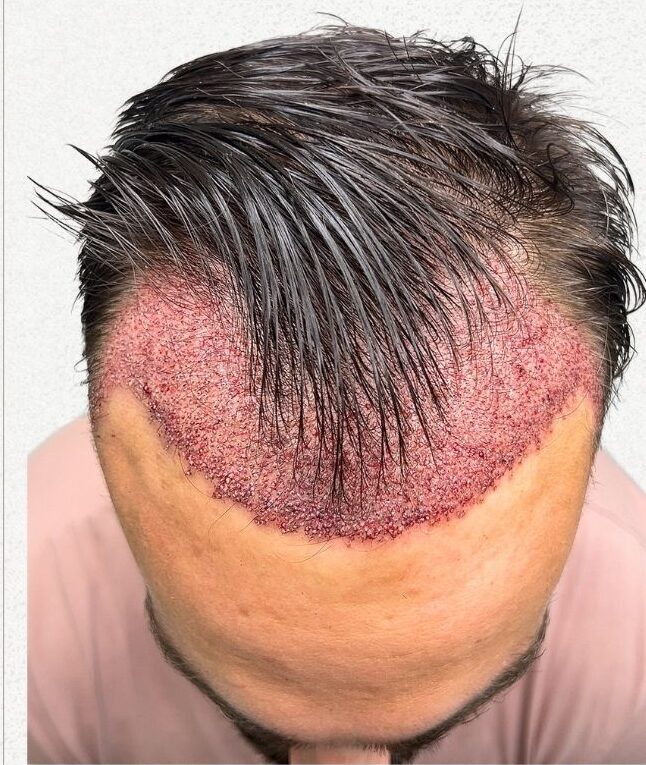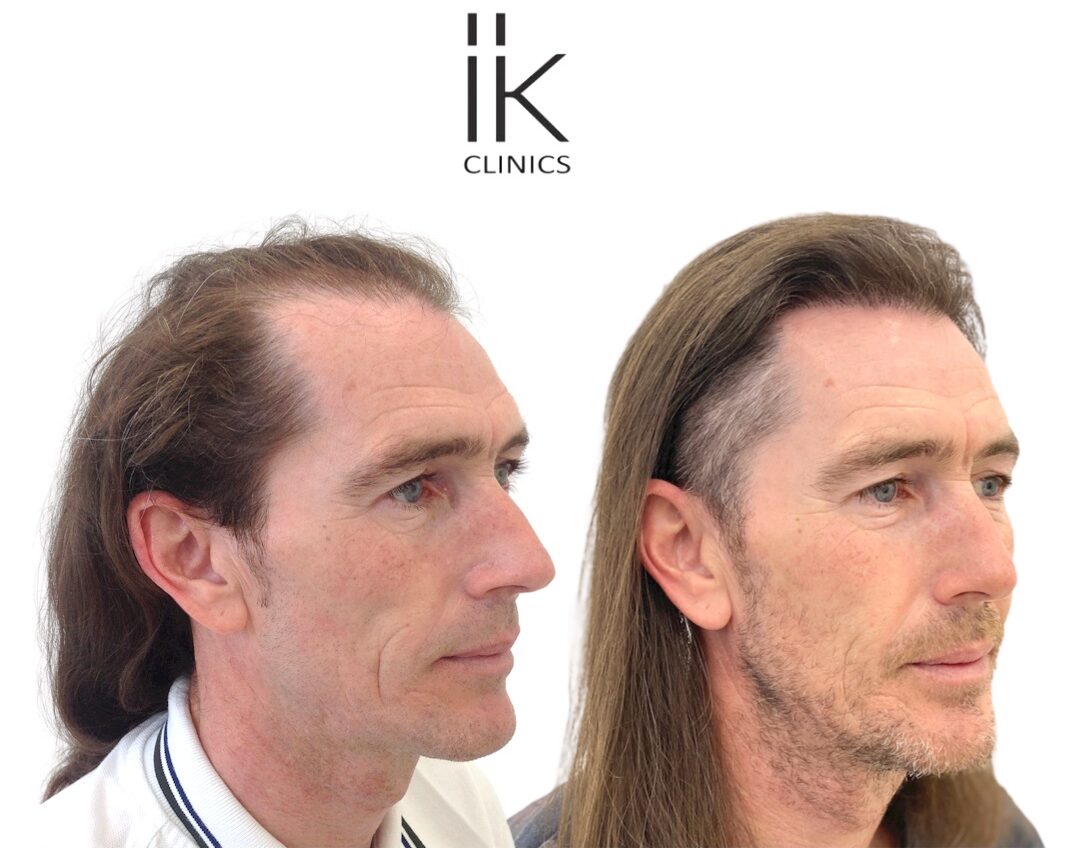Male pattern baldness, or androgenetic alopecia, is the most common form of hair loss in men and happens gradually over time. Whether you’re noticing subtle thinning or significant changes, understanding the stages of male pattern baldness can help you manage and plan for what’s next.
In this guide, we’ll break down the stages of male pattern baldness, explaining what happens at each stage and what you can do to address it.
The Early Signs: Thinning at the Temples
The first stage of male pattern baldness typically starts with thinning at the temples. You might notice your hairline beginning to recede slightly, forming a subtle “M” shape as the corners of your forehead lose density.
For many men, this stage is so gradual that it goes unnoticed at first. Often, it’s only under certain lighting or when looking at old photos that the changes become apparent.
At this stage, the hair elsewhere on your scalp usually remains unaffected, and the thinning is mild. However, this is a good time to start paying attention if you’re concerned about your hair.
Early treatments like specialised shampoos or topical solutions can help slow down the process and maintain what you have.

Thinning at the Crown
As male pattern baldness progresses, the next noticeable change is thinning at the crown, the area on the top back of your head. You might start seeing more scalp through your hair in this region, particularly in photos or bright light.
This stage is when hair loss begins to become more noticeable to others as well.
The crown thinning stage often occurs alongside continued receding at the temples, creating a two-pronged pattern of hair loss. Some men find this stage unsettling because it’s a clear sign of balding, but it’s worth noting that progression varies greatly.
For some, this stage might remain stable for years, while others notice rapid changes.
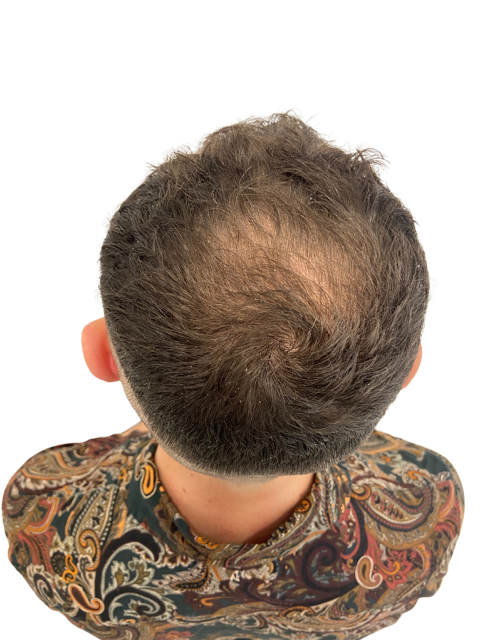
Patchy or Diffuse Hair Loss
As the condition continues, the hair on top of the scalp begins to thin more uniformly. This stage is often referred to as “diffuse thinning,” where hair loss spreads across the top rather than being concentrated in one area.
You might notice your scalp becoming more visible even though you haven’t developed large bald spots yet.
For many men, this stage can feel more dramatic because the thinning becomes harder to hide. Styling tricks that used to work may no longer have the same effect, and the overall density of your hair may appear significantly reduced.
Treatments like prescription medications or hair restoration therapies are often explored at this stage for those looking to slow further loss.
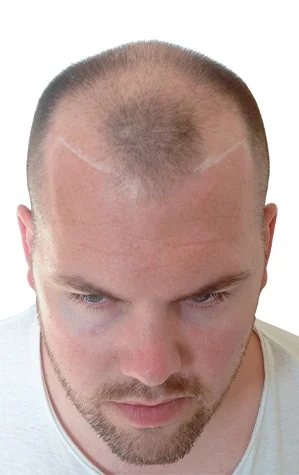
Moderate Pattern Baldness
By this stage, hair loss has advanced enough to leave a more defined pattern.
The receding hairline at the temples connects with the thinning crown, leaving a horseshoe-shaped band of hair around the sides and back of the head. The remaining hair on top becomes sparse or disappears altogether.
This stage is when many men begin to consider more advanced interventions, such as hair transplants or other surgical options. For others, this stage is a turning point where they decide to embrace the change, opting for shorter hairstyles or even shaving their head entirely.
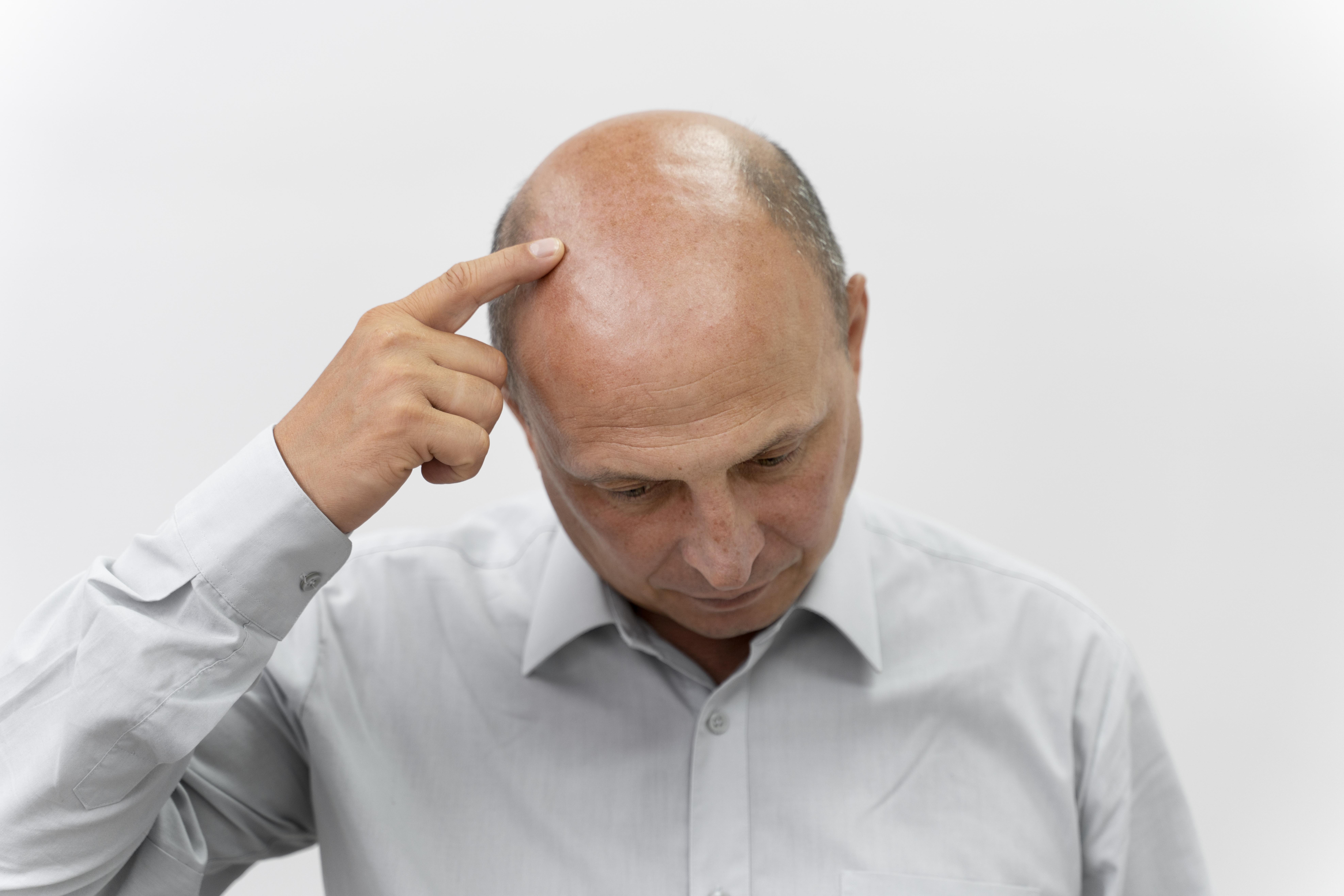
Extensive Pattern Baldness
Extensive pattern baldness is characterised by significant hair loss across the top and crown of the head, leaving only the sides and back with noticeable hair.
The hair that remains tends to form a U-shaped band and may itself be thinner or finer than before. At this stage, the dormant hair follicles on top of the scalp make regrowth unlikely without medical or surgical intervention.
For many men, this stage brings clarity on how they want to manage their appearance. Some explore wigs, hair systems, or permanent solutions, while others embrace their bald look with confidence.
Complete Baldness
The final stage of male pattern baldness involves complete hair loss on the top, front, and crown of the head. While the sides and back may retain some hair, it often appears thinner and less dense as well.
Complete baldness is a natural endpoint for many men with androgenetic alopecia and signals the conclusion of the hair loss process.
At this stage, many men focus on self-confidence and personal style rather than pursuing treatments. Whether you choose to keep the remaining hair or shave your head entirely, embracing your look can be incredibly empowering.
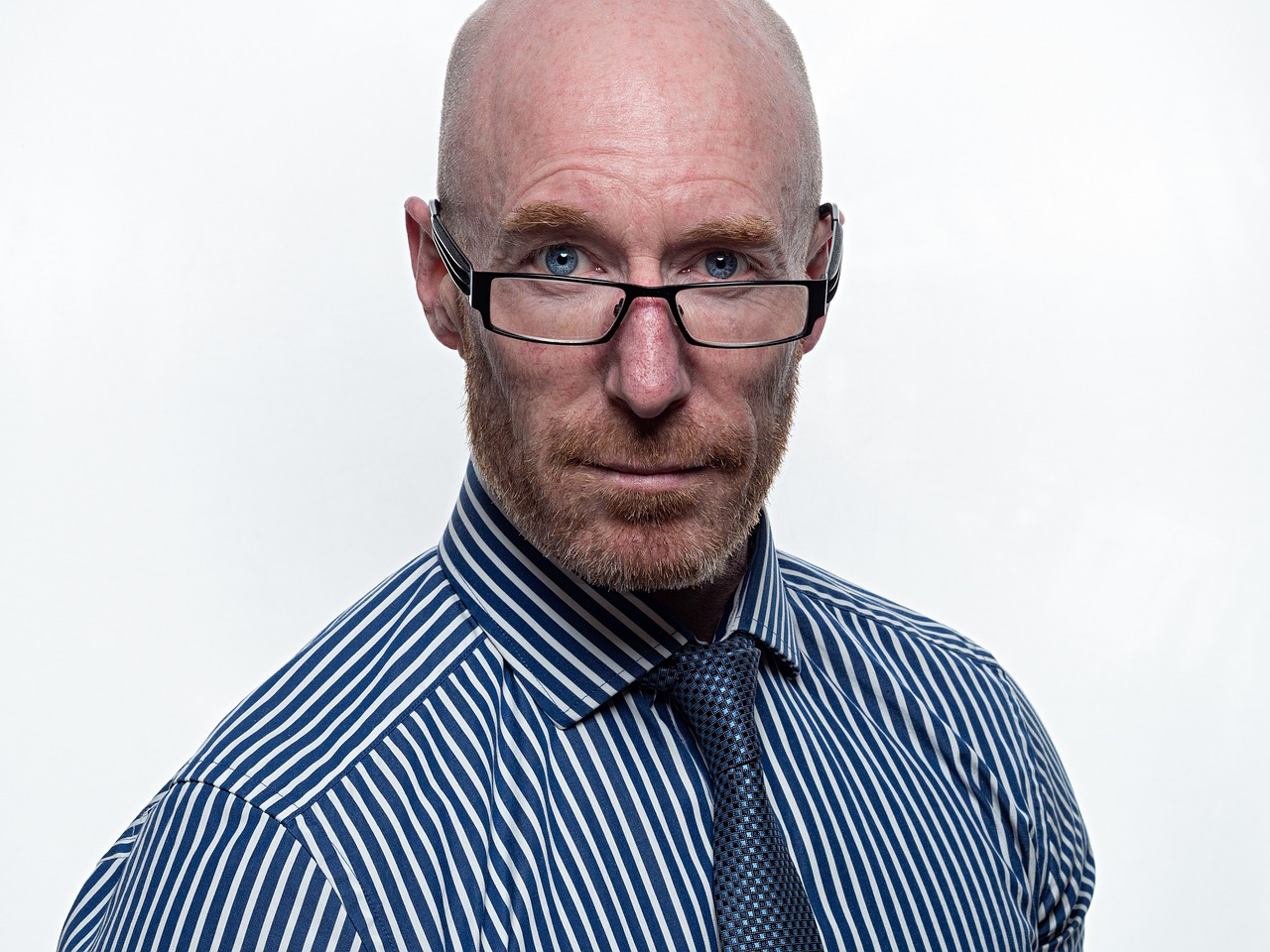
What Causes Male Pattern Baldness?
Male pattern baldness is primarily caused by genetic factors and is linked to the hormone dihydrotestosterone (DHT).
DHT causes hair follicles to shrink over time, resulting in thinner and shorter hair until the follicles stop producing hair altogether. While the genetic aspect can’t be changed, understanding the stages of baldness can help you decide on the right steps to take.
Managing Male Pattern Baldness
No matter what stage you’re at, there are options available for managing male pattern baldness. Early intervention can help slow down the process, while advanced treatments can restore hair in more noticeable cases.
Some of the most common options include:
Topical Treatments: Minoxidil is a popular solution applied directly to the scalp to encourage hair regrowth and slow thinning.
Prescription Medications: Finasteride works by reducing DHT levels, helping to slow the progression of hair loss.
Hair Transplants: In cases of advanced baldness, hair transplants offer a surgical solution to redistribute hair to balding areas.
Lifestyle Changes: A balanced diet, regular exercise, and stress management can contribute to overall hair health, though they won’t stop male pattern baldness entirely.

Embracing the Journey
Hair loss is a natural part of life for many men, and it’s important to remember that it doesn’t define who you are.
Some men choose to fight hair loss with treatments and interventions, while others embrace the change and adopt a new style. Either approach is valid, and the best choice is the one that makes you feel confident and comfortable.
If you’re unsure about your next steps, consulting a hair loss specialist, like our team at IK Clinics, or dermatologist can provide clarity and guidance. Remember, it’s not about having hair or not – it’s about how you carry yourself and the confidence you exude.
Final Thoughts
Male pattern baldness can feel daunting, especially as you progress through the stages, but it’s a journey shared by many.
Understanding the process can make it easier to plan your next steps and decide what’s right for you. Whether you opt for treatments, embrace baldness, or explore new styling options, the key is to stay informed and confident in your decisions.
Hair or no hair, confidence is what truly stands out.
About IK Clinics
We don’t just specialise in FUE Hair Transplants, we also offer other hair restoration treatments, such as Stem Cell Therapy and Plasma Therapy (PRP). Additionally, we also provide a range of anti-aging treatments to help you achieve that ‘I feel good’ feeling.
Get in touch to find out more and book your consultation.
